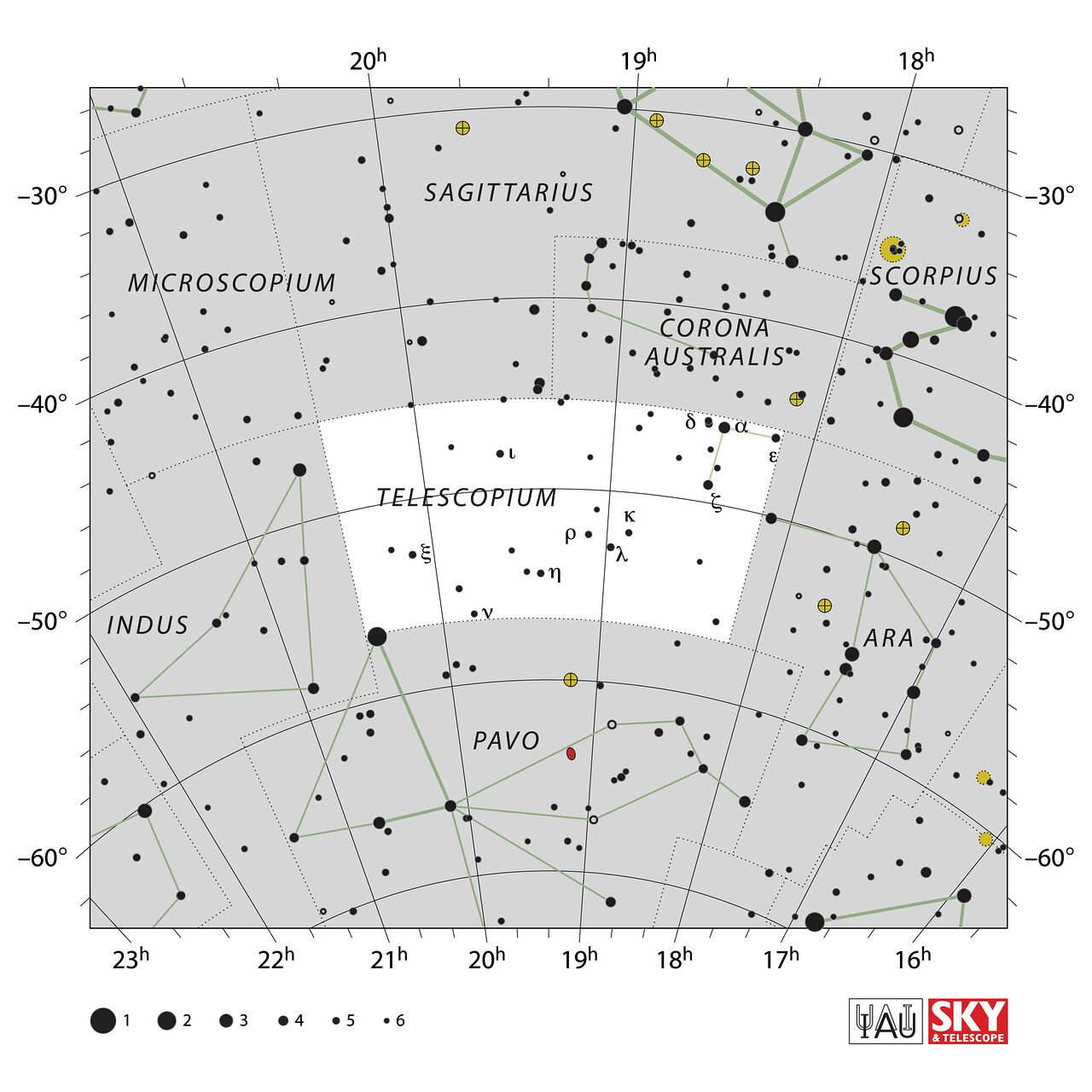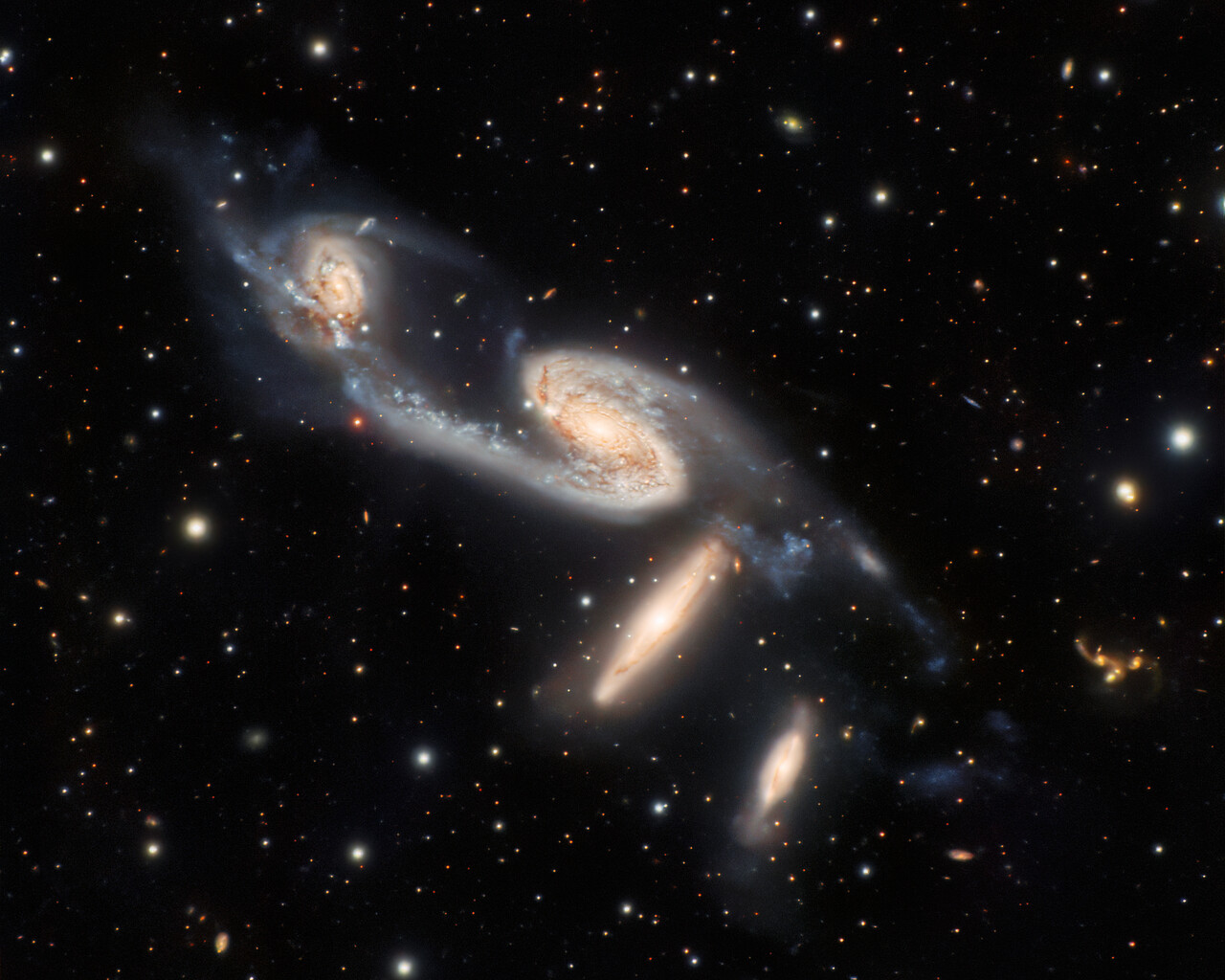Telescopium
Origin
Telescopium, representing a telescope, is a modern addition to the celestial map and does not have a deep mythological origin. It was introduced by the French astronomer Abbé Nicolas-Louis de Lacaille in the eighteenth century during his exploration of the southern hemisphere skies from South Africa. Lacaille, known for his precision in astronomical measurements, charted new constellations in the largely uncharted southern celestial regions. The name Telescopium reflects the scientific and exploratory spirit of the Age of Enlightenment, recognizing the critical role that telescopes played in expanding our understanding of the cosmos. Telescopium stands as a tribute to the advancement of astronomy and the tools used to explore the Universe beyond our world.
Bright Stars
Telescopium is relatively faint and doesn't contain any particularly bright stars.


 Photo of the constellation Telescopium produced by NOIRLab in collaboration with Eckhard Slawik, a German astrophotographer.
The annotations are from a standardized set of 88 western IAU constellations and stick figures from Sky & Telescope. Please find here a non-annotated version of the image.
Photo of the constellation Telescopium produced by NOIRLab in collaboration with Eckhard Slawik, a German astrophotographer.
The annotations are from a standardized set of 88 western IAU constellations and stick figures from Sky & Telescope. Please find here a non-annotated version of the image.
Credit: E. Slawik/NOIRLab/NSF/AURA/M. Zamani
Notable Objects
NGC 6584: This is a small planetary nebula found in Telescopium. While it may be challenging to observe detail in the nebula, its central star is relatively bright and can be a good target for amateur astronomers.




